Wantage Tramway
Summary
The Wantage Tramway was one of those oddities that seemed to straddle the tramway/railway world, never quite knowing for certain which it was, and somehow struggling on until relatively modern times (1945). Although initially horse drawn (services commenced on the 1st October 1875), the company soon switched to steam traction (introduced on the 1st August 1876) , and over the course of its history, ran a rather eccentric mix of tramway and railway engines; in contrast however, its passenger stock was always purely 'tramway' in design. The company was always run on a shoestring, though quite well given the circumstances, so engines tended to be second hand and track maintenance, minimal. Passenger services were withdrawn on the 31st July 1925 following competition from Great Western Railway buses, with a partial closure in the war due to damage from US Army road vehicles (allegedly including tanks) and for good on the 21st December 1945. Given that the line had no street running other than two road crossings, and despite its name, the 'tramway' can only really be regarded as a roadside railway with the owning company having an odd taste in motive power and passenger vehicles.
Photos of the horse-drawn period appear not to have survived, so it is impossible to say what drivers and conductors wore, though in all probability it was informal attire.
Steam engine drivers wore railway footplate attire, namely: heavy cotton jackets and trousers and soft-topped or grease top caps; neither the caps nor the jackets bore badges of any kind.
By the turn of the century, and possibly from the earliest days, conductors were wearing smart but informal attire, seemingly devoid of insignia, but which was however topped off by a kepi-style cap, probably company issued. From around the end of the Great War through to the cessation of passenger services in 1925, the kepis were superseded by military-style caps with a tensioned crown (top). Neither form of cap appears to have borne a badge of any description, though in the absence of detailed photographs, this cannot be stated with certainty.
The system was essentially operated on railway principles, so inspectors were never employed.
There is no evidence whatsoever to suggest that the 'Wantage', unlike the vast majority of UK tramway companies, used the services of women during the Great War.
For a history of this short line, see: 'The Wantage Tramway' by Reg Wilkinson; The Oakwood Press (1976) and 'The Wantage Tramway' by Nicholas de Courtais; Wild Swan Publications (1981).
Images
Drivers and conductors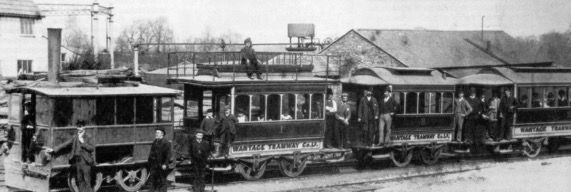
Engine No 4 (a Hughes design of 1877) stands at Wantage with Trailers No 1, 2 and 3 — photo undated, but probably taken in the early 1890s, shortly after the arrival of Trailer No 3. Although it is unclear whether any of the individuals depicted is the conductor, what is clear is that none of them are wearing a uniform. Photo courtesy of the Tramways and Light Railway Society, with thanks to David Voice.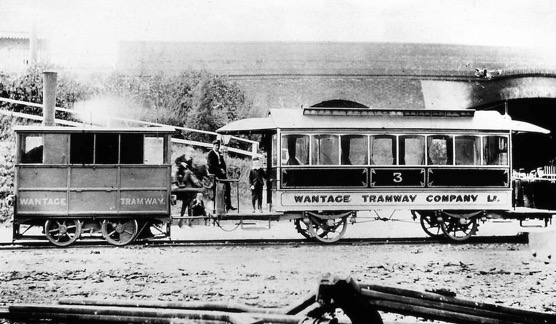
Engine No 4 once again, this time with a rather pristine-looking Trailer No 3 (acquired in 1890) — photo purportedly taken in 1900, though considering the condition of the trailer, probably much closer to 1890 I would have thought. Photo courtesy of the John Law Collection.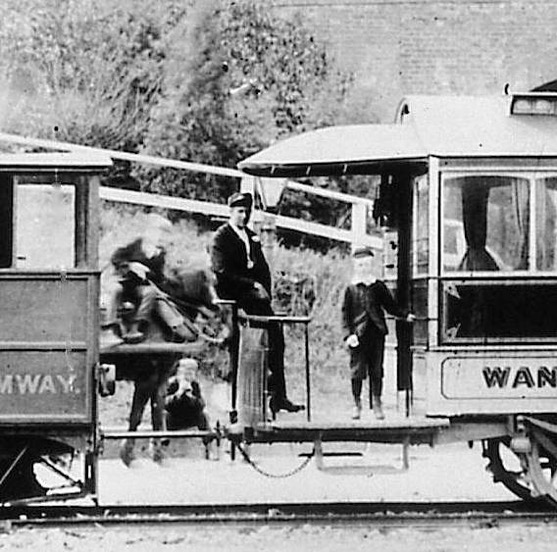
A blow-up of the above photo showing the man in the middle, who is presumably the conductor; he would appear to be wearing a kepi-style cap.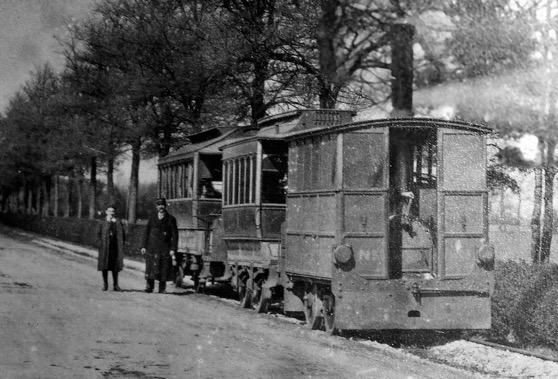
Engine No 4 stands near Wantage Rd with what is probably Trailer No 3 (at the rear) and one of the two original horsecars (No 1) — photo believed to have been taken around 1900. Photo courtesy of the John Law Collection.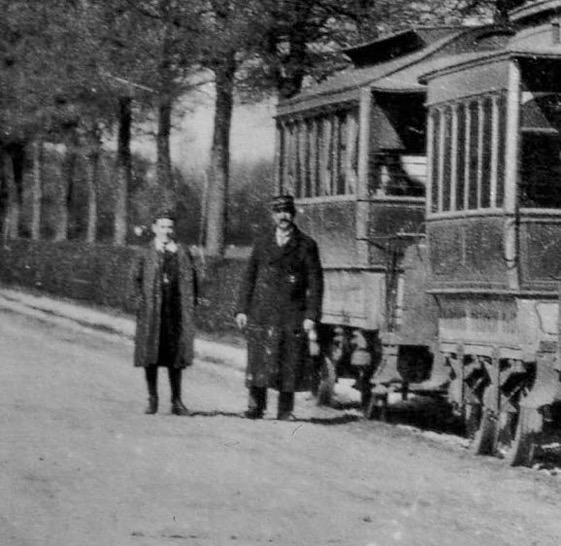
A blow-up of the above photo showing the conductor, who is wearing an unmarked greatcoat and a kepi-style cap.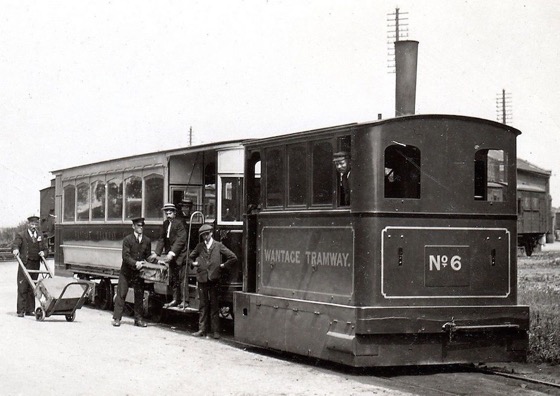
A scene at Wantage Rd, purportedly taken in 1912. Engine No 6 (a Matthews design of 1881) is coupled to Trailer No 4, which began life in 1900 as a double-deck Hurst-Nelson exhibition tramcar, being acquired by the WTCo in 1912, following which it was unceremoniously cut down. The two uniformed figures are more than likely Great Western Railway porters from Wantage Rd Station. Source unknown.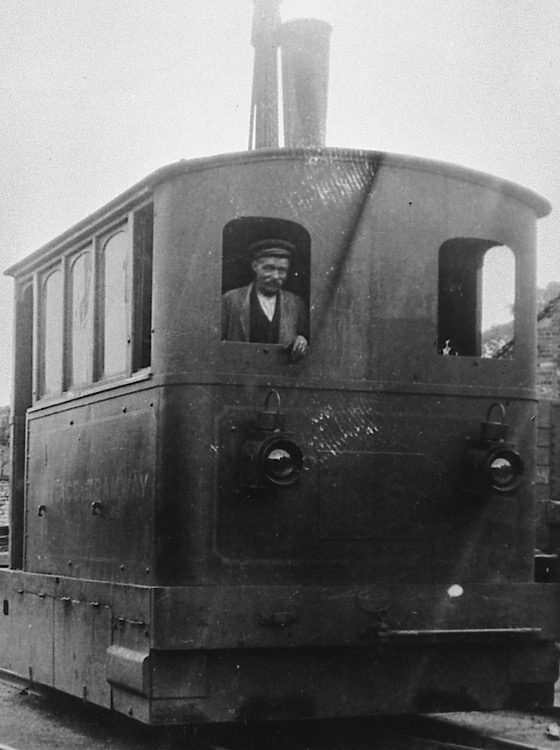
Engine No 6 stands in one of the yards at Wantage in 1915. Photo courtesy of the Tramways and Light Railway Society, with thanks to David Voice.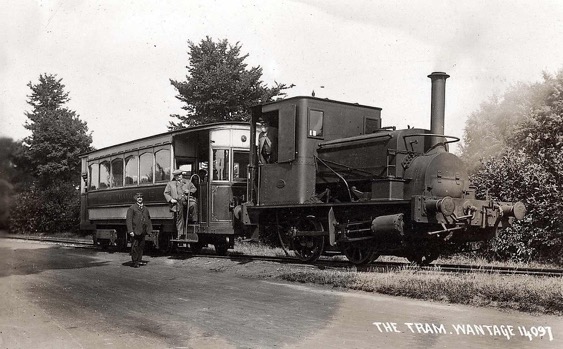
A commercial view of Engine No 7 (a Manning Wardle saddle tank acquired in 1893) and Trailer No 4 — photo undated, but definitely taken between 1912 when Trailer No 4 was acquired, and 1915, when Conductor Bill Savory (see below) left the company.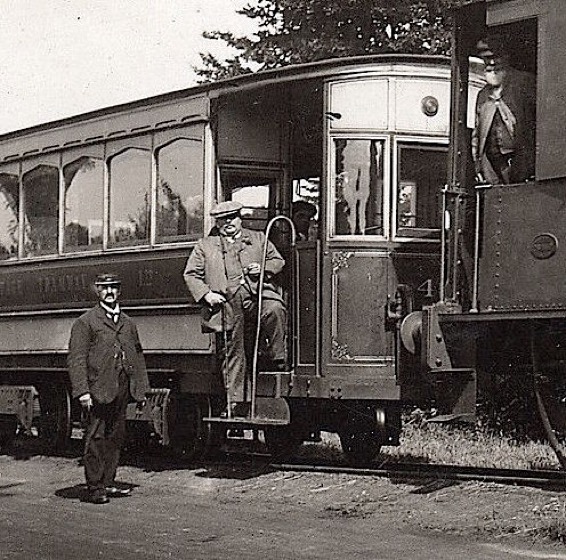
A blow-up of the above photo showing the central figures — the conductor is believed to be Bill Savory and the driver (right), a Mr Hewitt. Conductor Savory is wearing a plain single-breasted jacket and what would appear to be a squat kepi-style cap; the latter does not appear to bear a cap badge.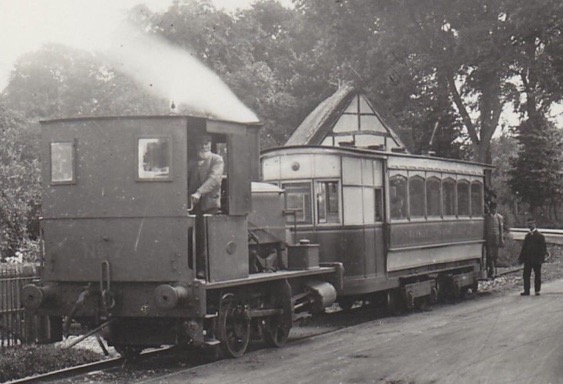
Driver Hewitt and Conductor Savory once again with Engine No 7 and Trailer No 4, this time at Grove Bridge around 1914. Conductor Savory is wearing a kepi-style cap. Commercial view.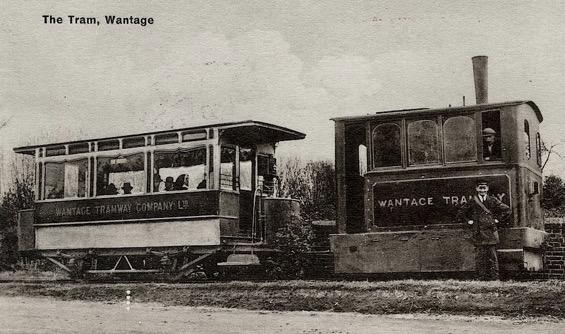
A commercial view of Engine No 6 and a rather pristine-looking Trailer No 5 (purchased in 1912) — photo undated, but possibly taken just after the Great War. The conductor is wearing a double-breasted jacket without insignia, and a military style cap, again without a badge.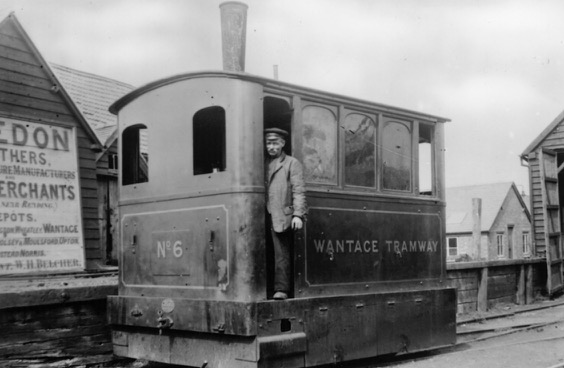
The driver of Engine No 6 poses for the camera outside the small engine shed at Wantage — photo purportedly taken in 1923. The driver appears to be the same man who we see in the 1915 shot of No 6 shown above. Photo courtesy of the Tramways and Light Railway Society, with thanks to David Voice.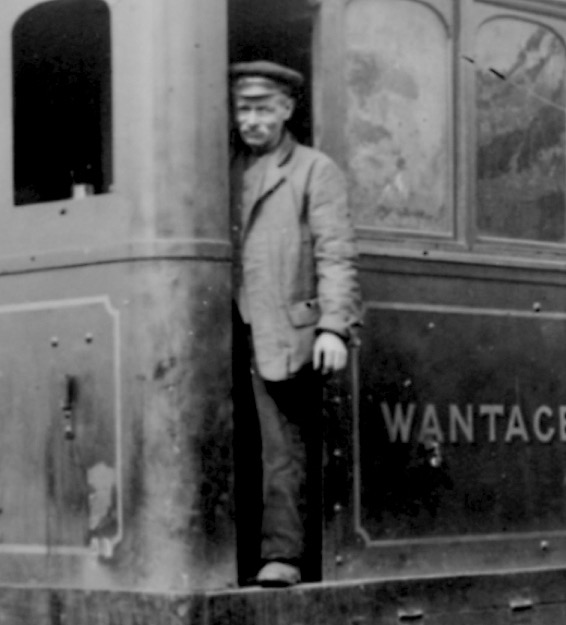
A blow-up of the above photo showing the driver; he is wearing a waistcoat, work jacket and soft-topped peaked cap, all without insignia of any kind.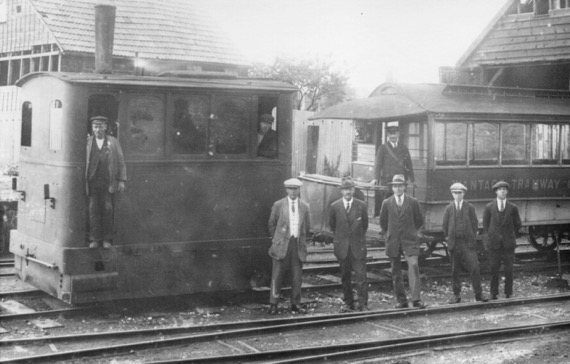
No 6 captured outside the small engine shed, with Trailer No 3 behind it — photo taken in the early 1920s. Photo courtesy of the Tramways and Light Railway Society, with thanks to David Voice.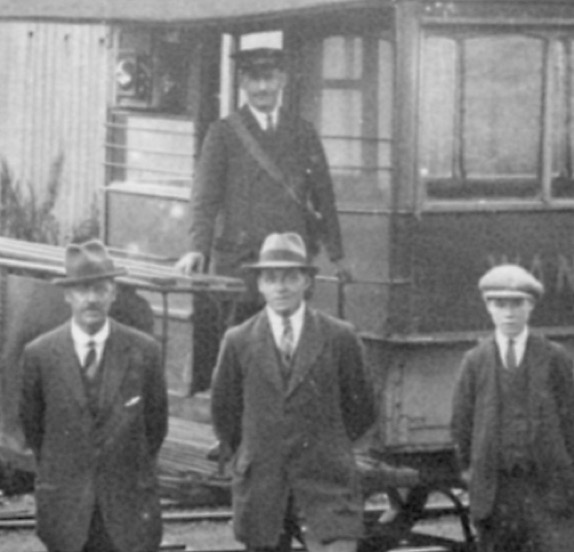
A blow-up of the above photo showing the conductor-cum-guard; he is wearing a single-breasted jacket and military-style cap, though whether or not it bears a cap badge, is impossible to say.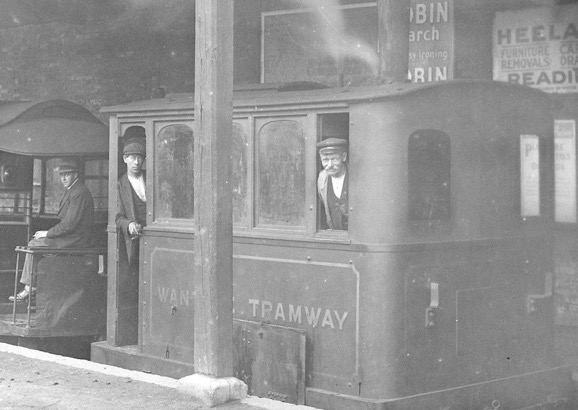
Engine No 6 once again, this time in the train shed at Wantage — photo undated, but probably taken in the early 1920s. The driver is the same man seen in many other photos taken between 1910 and 1925, whilst the man at the other end is probably a stoker.